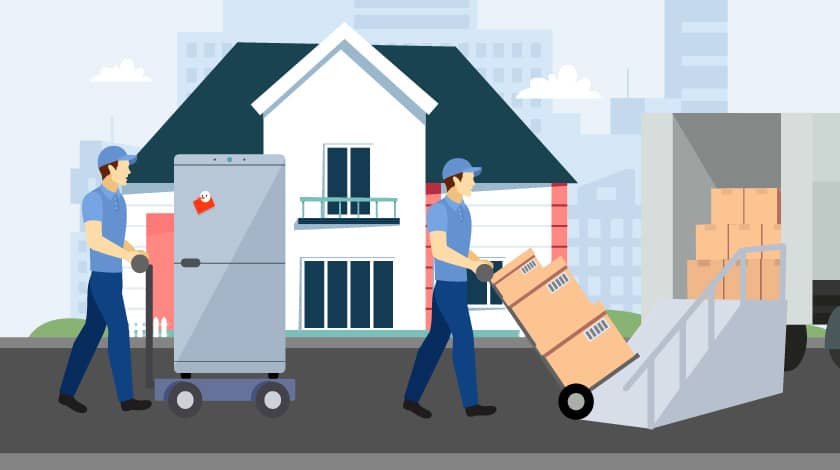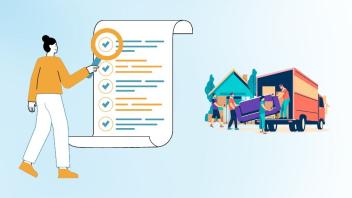11 Essential Loading & Unloading Equipment for Secure Relocation

In this guide, we'll cover everything you need to know about the best equipment for loading and unloading trucks and other cargo carriers, ensuring a smooth and secure relocation process. The primary goal of this guide is to provide you with practical and insightful information to help you choose the right loading and unloading equipment for your specific needs. We'll discuss various types of equipment, top brands, and important factors to consider when selecting the best loading unloading machines for your relocation project.
Essential Loading and Unloading Equipment
Loading and unloading efficiently requires the correct equipment. Tools make moving safe, secure, and easy. For your next move, we'll review the most important loading and unloading equipment.
Hand Trucks and Dollies
Hand trucks and dollies are versatile and easy-to-use tools for loading and unloading such as moving boxes, furniture, appliances, and other items. They're especially useful for lighter loads and can significantly reduce the physical strain of lifting and carrying objects.
Hand trucks (also known as sack trucks or two-wheelers) are L-shaped, with handles on one end and wheels on the other. They allow you to stack and transport multiple items at once, saving time and effort for loading and unloading.
Dollies for loading and unloading are flat platforms with four wheels, designed for moving larger and heavier items. Furniture dollies, appliance dollies, and drum dollies are some common types.
Pallet Jacks
Warehouses and storage facilities employ pallet jacks to move palletized goods. They easily carry and transport huge loads and can be manual or electric. Pallet jacks help load and unload trucks by moving many objects at once.
Forklifts
Forklifts are powerful, motorized machines used to lift and transport heavy loads. They come in various sizes and capacities, making them suitable for a wide range of applications. Forklifts are commonly used in warehouses, factories, and construction sites for loading and unloading process of palletized goods, as well as for stacking items on shelves or racks.
Conveyor Systems
Conveyor systems are mechanized devices that transport items along a fixed path, typically in assembly lines or warehouse settings. They can be an efficient solution for loading and unloading trucks, as they allow for the continuous flow of goods between different levels or areas. Types of conveyor systems include belt conveyors, roller conveyors, and chain conveyors for loading and unloading operations.
Dock Levelers and Boards
For loading and unloading Dock levelers and boards are essential for bridging the gap between the loading dock and a truck or trailer during the loading and unloading operations. They ensure a smooth and safe transition for equipment and personnel moving between different levels.
Dock levelers are permanently installed devices that can be raised or lowered to match the height of the truck bed for loading and unloading.
Dock boards (also known as dock plates) are portable, metal ramps that can be placed between the dock and the truck to create a smooth path for equipment.
Vehicle-Mounted Cranes and Liftgates
Vehicle-mounted cranes and liftgates are designed to facilitate the loading and unloading operations of heavy or bulky items directly from a truck or trailer.
Vehicle-mounted cranes (also known as truck-mounted cranes) are installed on the back of a truck, and can be used to hoist and move large items.
Liftgates are hydraulic platforms installed at the rear of a truck or trailer, which can be raised or lowered to transport heavy items between the ground and the truck bed, also for unloading process.
Ramps and Walkboards
Ramps and walk boards are essential for creating a smooth, inclined surface that allows for easy movement of equipment and personnel during the loading and unloading operations.
Ramps can be portable or permanently installed, and are typically made of metal or heavy-duty plastic. They're designed to accommodate hand trucks, dollies, and other wheeled equipment.
Walkboards (also known as dockboards) are similar to ramps, but are specifically designed for use with forklifts and
Selecting the Right Equipment for Your Relocation Needs
Evaluating the Type and Volume of Goods Being Moved
The type and volume of goods you need to move will greatly influence your choice of equipment for loading and unloading operations. Consider the following questions:
-
Are your items heavy, bulky, or fragile?
-
Do you need to move a large number of items or just a few?
-
Will you be handling palletized goods, boxes, or loose items?
-
Are there any special requirements for transporting specific items?
Understanding your specific needs will help you choose the most suitable equipment for your relocation project.
Assessing Your Relocation Site and Environment
The characteristics of your relocation site and environment are crucial factors to consider when selecting loading and unloading equipment. Take into account:
-
The available space at both the origin and destination sites
-
The distance between the loading and unloading points
-
The presence of stairs, ramps, or elevators
-
The type of flooring and any potential obstacles
-
Weather conditions and outdoor terrain (if applicable)
These factors will help you determine the most appropriate and efficient equipment to use in your specific situation.
Determining Your Budget and Long-Term Needs
-
The cost of purchasing or renting equipment
-
Maintenance and repair expenses
-
Training and certification costs for operators
-
Potential savings from increased efficiency and reduced downtime
-
Additionally, assess your long-term needs to ensure that the chosen equipment will continue to be useful and cost-effective in the future.
Balancing Safety, Efficiency, and Cost-Effectiveness
-
Prioritize safety features to minimize the risk of accidents and injuries.
-
Choose equipment that can handle the required load capacity without compromising efficiency.
-
Opt for reliable and durable equipment to reduce maintenance and repair costs.
-
Compare the cost of renting versus purchasing equipment to determine the most cost-effective option.
Proper Usage Techniques and Safety Precautions
-
Read the user manual: Familiarize yourself with the equipment's features, controls, and limitations before using it.
-
Inspect the equipment: Before each use, check for any signs of damage, wear, or malfunction. Address any issues promptly.
-
Follow safety guidelines: Wear appropriate personal protective equipment (PPE), such as gloves, safety shoes, and hard hats. Follow all safety rules and regulations pertaining to the goods, equipment and your work environment.
-
Use the equipment as intended: Do not overload the equipment or use it for tasks beyond its designed capabilities.
-
Maintain a clean work area: Keep the loading and unloading operations area free of debris, obstacles, and spills to minimize the risk of accidents in the loading area.
Load Distribution and Securing Cargo
-
Distribute weight evenly: Ensure that the weight of the load is balanced on the equipment to prevent tipping or instability.
-
Secure cargo properly: Use straps, ropes, or other securement devices to prevent items from shifting, falling, or becoming damaged during transit.
-
Stack items correctly: Stack items in a stable manner, with heavier items on the bottom and lighter items on top. Avoid stacking items too high, as this may cause instability.
-
Follow load capacity guidelines: Adhere to the equipment's maximum load capacity to prevent overloading and potential equipment failure.
Training and Certification for Equipment Operators
-
Invest in operator training: Ensure that all equipment operators receive comprehensive training on the proper usage and safety procedures for the specific equipment they will be using.
-
Obtain necessary certifications: Some equipment, such as forklifts, may require operators to hold a valid certification or license. Ensure that all operators meet the necessary requirements for the equipment they will be operating.
-
Promote a safety culture: Encourage a strong focus on safety within your organization by providing ongoing safety training, promoting open communication about safety concerns, and recognizing employees who prioritize safety for safe loading and unloading process.
Factors to Consider in Your Decision
Before deciding whether to rent or purchase equipment, consider the following factors:
-
Frequency and duration of use
-
Safe loading and unloading along with warehouse safety.
-
Long-term needs and plans
-
Available budget and financing options
-
Maintenance and storage requirements
-
Equipment availability and location
Pros and Cons of Renting Equipment
Pros
-
Lower upfront cost: Renting requires a smaller initial investment compared to purchasing equipment.
-
Flexibility: Renting allows you to easily change equipment based on your changing needs, without committing to ownership.
-
Maintenance: The rental company typically handles maintenance and repairs, reducing your responsibility and expenses.
-
Storage: No need to find storage space for the equipment when it's not in use.
Cons
-
Higher long-term cost: If you use the equipment frequently or for an extended period, renting may be more expensive in the long run.
-
Limited customization: Rental equipment may not have the specific features or customizations you need for your operation.
-
Availability: You may face limited equipment availability or have to wait for the equipment to be delivered, which can cause delays.
Conclusion
Safe and efficient moving requires mastering loading and unloading. This handbook covers equipment kinds, tactics for choosing the correct equipment, and essential criteria like safety, legal compliance, and cost-effectiveness. As we conclude, let's review some critical insights and last tips for choosing secure moving equipment. Based on your items, site conditions, and operating needs, choose the best relocation equipment. Consider renting or buying equipment. Consider features, reliability, and customer reviews when choosing a brand. For a flawless migration, allocate enough for equipment, maintenance, training, and insurance. Following these steps could help with safe loading and avoid severe injuries such as spinal injuries.











